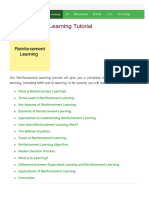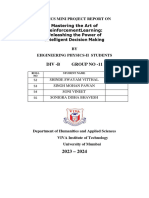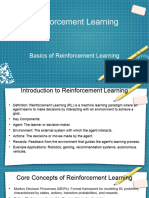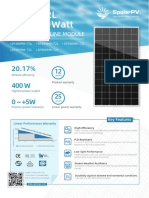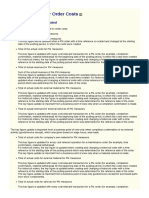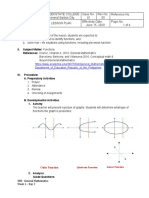0% found this document useful (0 votes)
22 views18 pagesReinforcement Learning Mastery Path
The document outlines a comprehensive path to mastering Reinforcement Learning (RL), starting from foundational concepts to advanced techniques and applications. It covers key components of RL, classical algorithms, the transition to Deep Reinforcement Learning (DRL), and various advanced topics such as model-based RL and intrinsic motivation. The document emphasizes practical implementation using TensorFlow and highlights common challenges and strategies in the field.
Uploaded by
dawood935841Copyright
© © All Rights Reserved
We take content rights seriously. If you suspect this is your content, claim it here.
Available Formats
Download as PDF, TXT or read online on Scribd
0% found this document useful (0 votes)
22 views18 pagesReinforcement Learning Mastery Path
The document outlines a comprehensive path to mastering Reinforcement Learning (RL), starting from foundational concepts to advanced techniques and applications. It covers key components of RL, classical algorithms, the transition to Deep Reinforcement Learning (DRL), and various advanced topics such as model-based RL and intrinsic motivation. The document emphasizes practical implementation using TensorFlow and highlights common challenges and strategies in the field.
Uploaded by
dawood935841Copyright
© © All Rights Reserved
We take content rights seriously. If you suspect this is your content, claim it here.
Available Formats
Download as PDF, TXT or read online on Scribd
/ 18

















